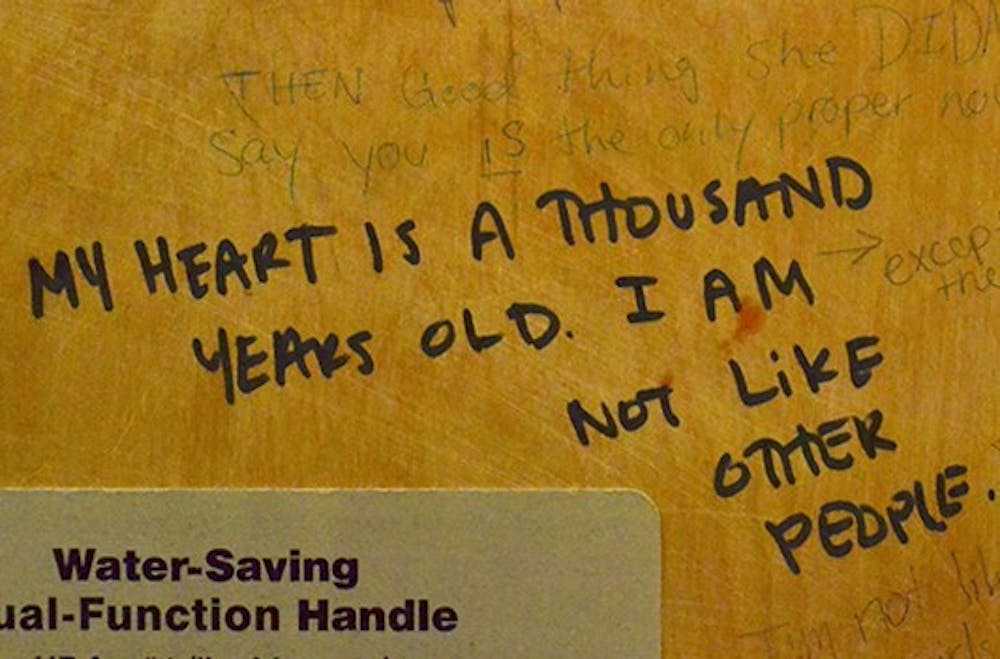Because of its anonymity, graffiti produces content that is unique and sometimes even vulgar.
A study published in “A Journal of Feminist Geography” in May explored the differences between graffiti written on the walls in men’s and women’s restrooms.
“Much like many anonymous spaces, including internet sites, the unmoderated nature of bathroom graffiti may undermine the potential for democratic exchange,” the study reads.
It found that graffiti in men’s restrooms were often vulgar and aggressive, while graffiti in women’s restrooms were supportive and philosophical.
It also found that men and women interacted with graffiti differently.
With graffiti that provoked a thread or conversation, men would respond to others’ graffiti with insults, and women would typically reply to each other with encouragement.
Many people try to fit graffiti into the categories of art or vandalism.
Cary Levine, a contemporary art associate professor at UNC, said he wouldn’t call a drawing on a bathroom wall art, but he finds it problematic to draw lines and distinctions in the art world.



